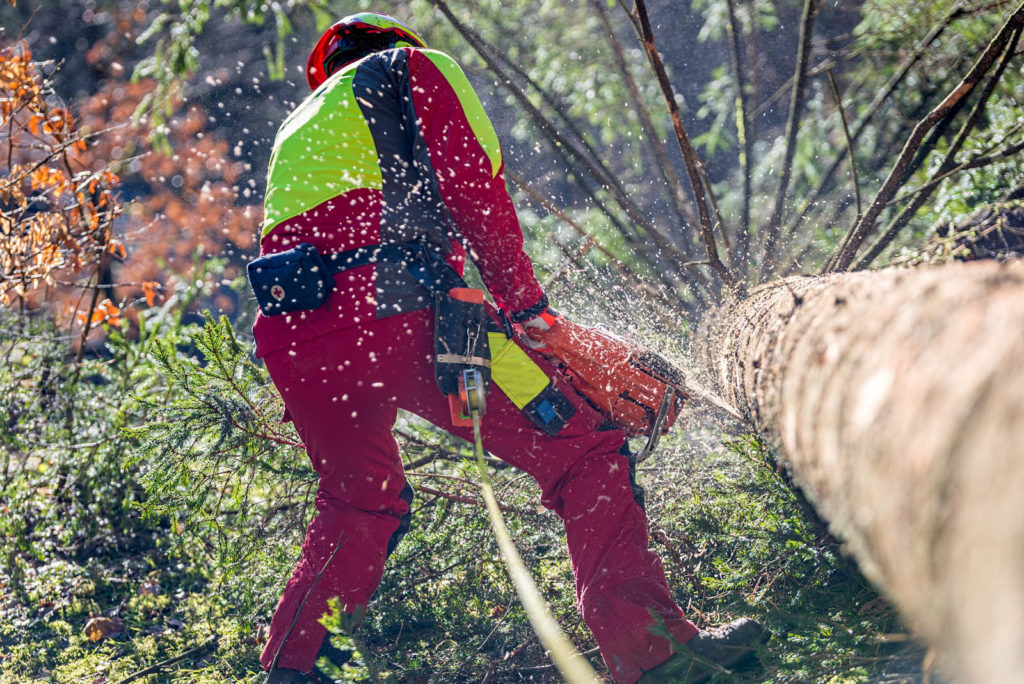A safe, clean and pollution free workplace is important in offering quality of life for a labor force, which also enhances worker productivity. With multiple risk factors in a work environment, including mechanical or electrical hazards, extreme heat or cold, toxic chemicals, noise and air pollution, providing for worker physical and psychological comfort is a challenge, but addressing these more importantly also supports workplace safety.

Recently, the World Health Organization (WHO) and the International Labor Organization (ILO) jointly released a report on work-related accidents, a welcoming effort to highlight the importance of workplace safety. This report considered workplace related injuries and casualties for the period 2000-2016. In 2016, about 1.9 million deaths occurred globally due to work-related incidents, about 19 percent of total deaths. The report emphasizes the need for countermeasures to pollution, heat hazards and other injuries.
Advanced textile materials occupy an important place in contributing to a safer working environment. Although the advanced textiles sector so far has not identified a separate category for workplace protective textiles, it is grouped under protective textiles, which are a significant market within technical textiles.
Recent reports from various market survey agencies show that the protective textiles sector could grow at about 4.5 percent to 7 percent per year. The global protective textiles market is expected to be $13.21 billion with an annual growth of 6.7 percent, according to ResearchAndMarkets.com.
Although there is no structured classification for workplace PPE, one may classify workplace protective textiles based on major risk factors that may include electrical, thermal, chemical and biological, and mechanical hazards. Filtering equipment and materials are a critical part of addressing multiple risk factors.
Filtering equipment
Prior to the COVID-19 era, there were two major groups of personal filters: filtering facepiece respirators (FFRs) and surgical masks. Filtering facepiece respirators such as N95s and N99s are equipped to protect wearers from fine particulate matters, aerosols and microbes, such as viruses. People working in coal-powered plants and those exposed to toxic vapors must use such high-level filters for protection.
Face masks have evolved depending on the level of filtering efficiencies: FFRs, surgical masks, face coverings and FISORS. A new class of face coverings, which is a combination of filters and cloth coverings emerged during the COVID-19 era, first introduced in an earlier publication in Advanced Textiles Source (“The basics and the alternatives,” March 25, 2020). Regarding workplace safety to avoid occupational hazards, protective face coverings that filter aerosols and particulate matters are needed. For example, in the case of sanitation workers who help with keeping the environment clean, use of face coverings, even ordinary cloth filters can serve as a protective medium with limited filtration efficiency.
The recent WHO/ILO joint report has reported that in 2016, globally there have been deaths due to exposure of fine particulate matter, fumes and toxic gases amounting to about 450,000, next only to illness due to long working hours. The above statistics highlight the importance of personnel, infrastructural and industrial filters.
The advanced textiles sector must engage in continuous R&D regarding filters. COVID-19 has heightened the need for standards development, so that filters can tackle current and future aerosol pollution and microbe contamination episodes more effectively. In addition to facial protection, better indoor air quality requirements have received priority in light of the ongoing pandemic.
Sustainability goals based on the Paris agreement call for preventing global warming and curbing greenhouse gas emissions. This necessitates the need for clean coal and clean energy infrastructures. Coal-powered plants must have better bag filters made using nonwoven technologies such as needle-punching and bonding methods. Such filters are commonly referred to as industrial filters.

Industrial wipes
While consumer and medical wipes occupy a major share of the wipes market segment, industrial wipes, which remain as an important tool to counter workplace hazards, should not be neglected. According to INDA estimates in 2021, disposable nonwovens based on tonnage accounted for 51 percent as opposed to 49 percent in 2020. This shift has been primarily due to the increase in wipes and filtration products.
Industrial wipes are heavyweight and more cost sensitive. Mechanical and heavy industries involving pipelines deal with petroleum products, for example, which can lead to health hazards. Industrial wipes that are absorbent fibrous substrates offer necessary non-medical countermeasures.
The advanced textiles industry has an opportunity to delve into developing sustainable industrial wipes. “With cotton prices skyrocketing this season, the conventional sector should look into finding opportunities for wastes and blends,” says Arunkrishna Srinivasan, director of the fine count cotton spinning mill, Jayalakshmi Textiles, based in Aruppukkottai, India.
“We look for avenues to collaborate with research organizations to develop value-added textiles. A fruitful collaboration with Texas Tech University has resulted in nonwoven wipes, which can be used by heavy metal and oil industries,” adds Arunkrishna. An interesting aspect of this advanced textiles is that it is highly sustainable and so avoids microplastic pollution while promoting health and safety in workplace.

More protection needed
A range of textile products find applications in reducing occupational injuries, including for cut-resistant clothing, visibility garments, soft ballistic chest shields and others. Workwear fabrics for use in dark environments use reflective and fluorescent pigments, materials and yarns; railroad associates, construction staff and emergency personnel regularly use these garments to enhance safety.
India-based Alok Industries Ltd. manufacturers bright color, high visibility fabrics. Normally these fabrics utilize fluorescence; while returning to a stable state, these materials release energy in the form of light and heat enabling the fabrics highly visible. A natural product like quinine not only has medicinal capabilities, it is also known to have fluorescence. The chemistry and structure of these compounds will help us to investigate biomimicry in developing next generation protective textiles.
Flame and arc heat-resistance fabrics are made using cotton, polyester-cotton blends ranging in weight from 150 GSM to 300 GSM. India-based Loyal Textiles manufactures workwear protective fabrics using carbon fiber in blends to develop anti-static, flame-retardant fabrics.
The textile sector needs to utilize research advancements in nanotechnology, surface chemistry, optical physics and biomimicry to develop advanced textiles to address these and other hazards. Comfort and functional aspects of workwear fabrics are also important attributes and will play an important part in their practical and commercial acceptance.
Seshadri Ramkumar, Ph.D., is a professor at Texas Tech University and a frequent contributor to Advanced Textiles Source.
 TEXTILES.ORG
TEXTILES.ORG


